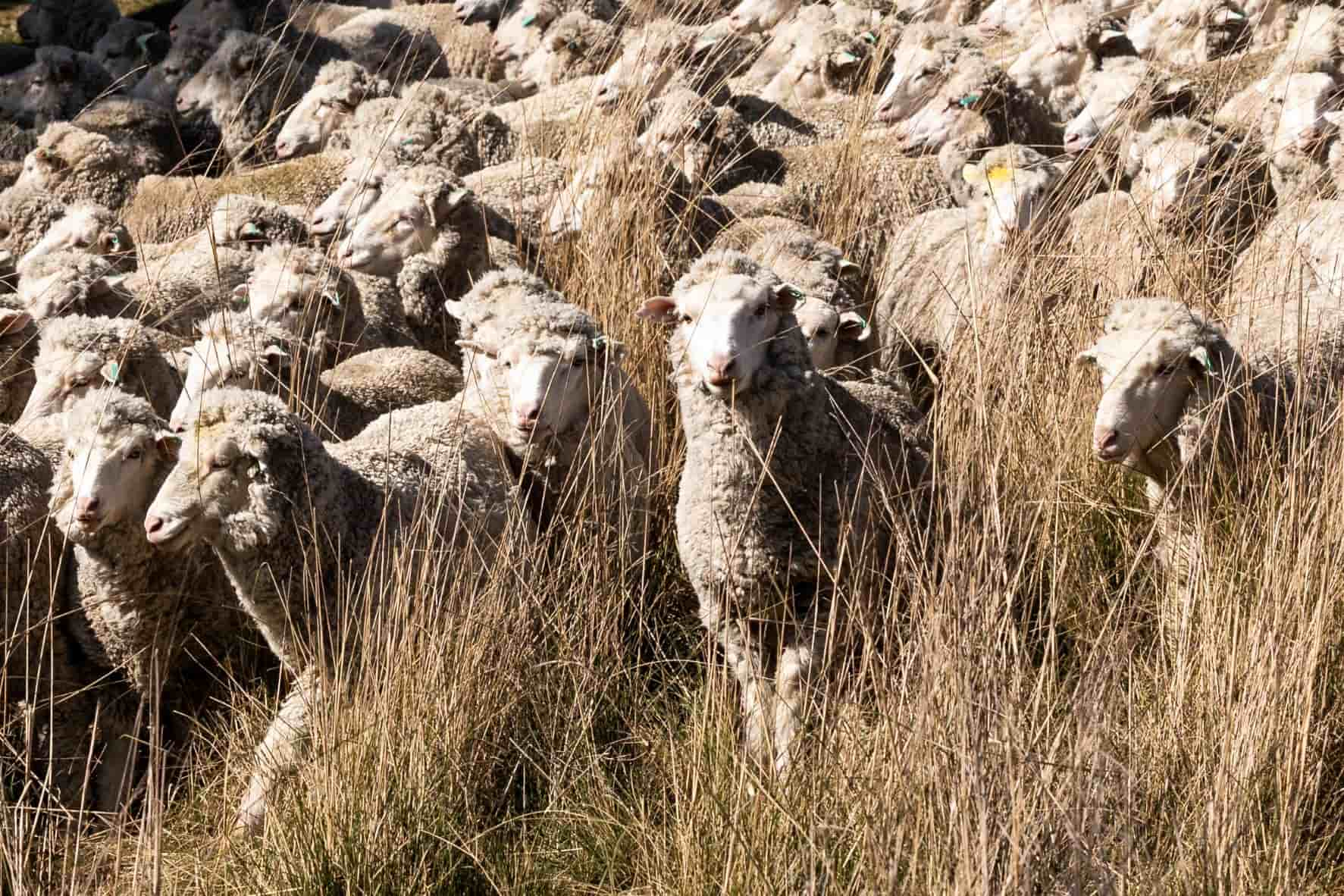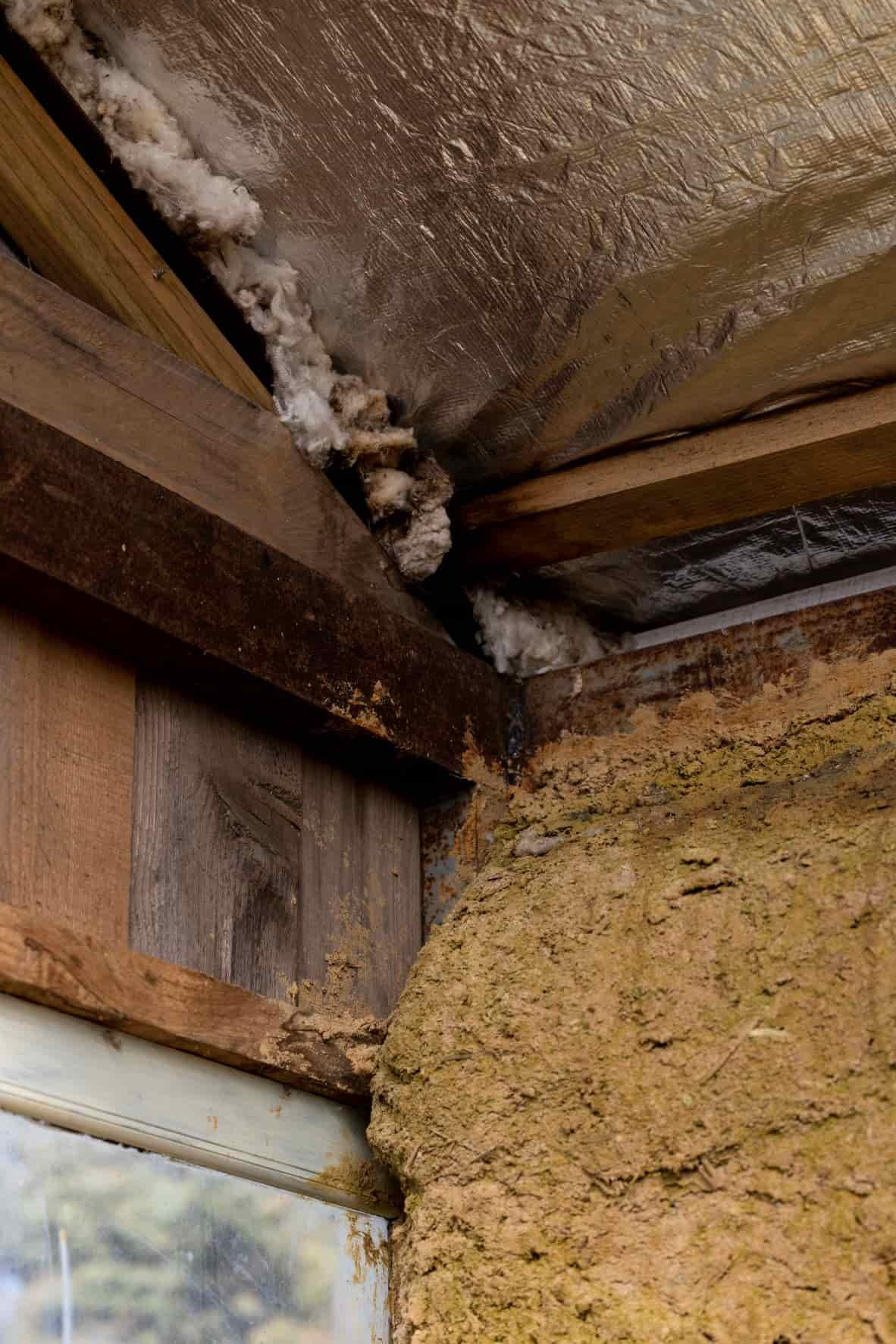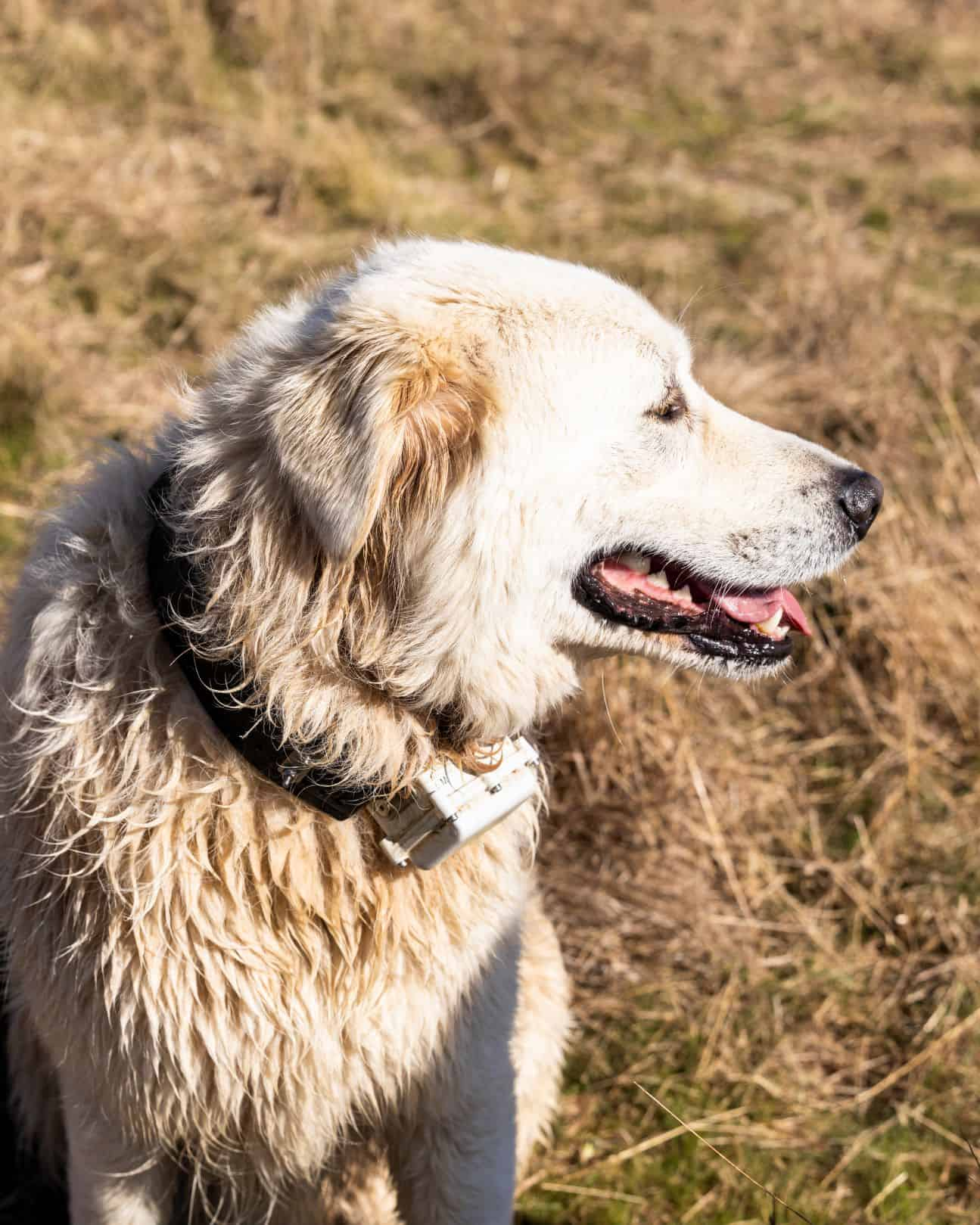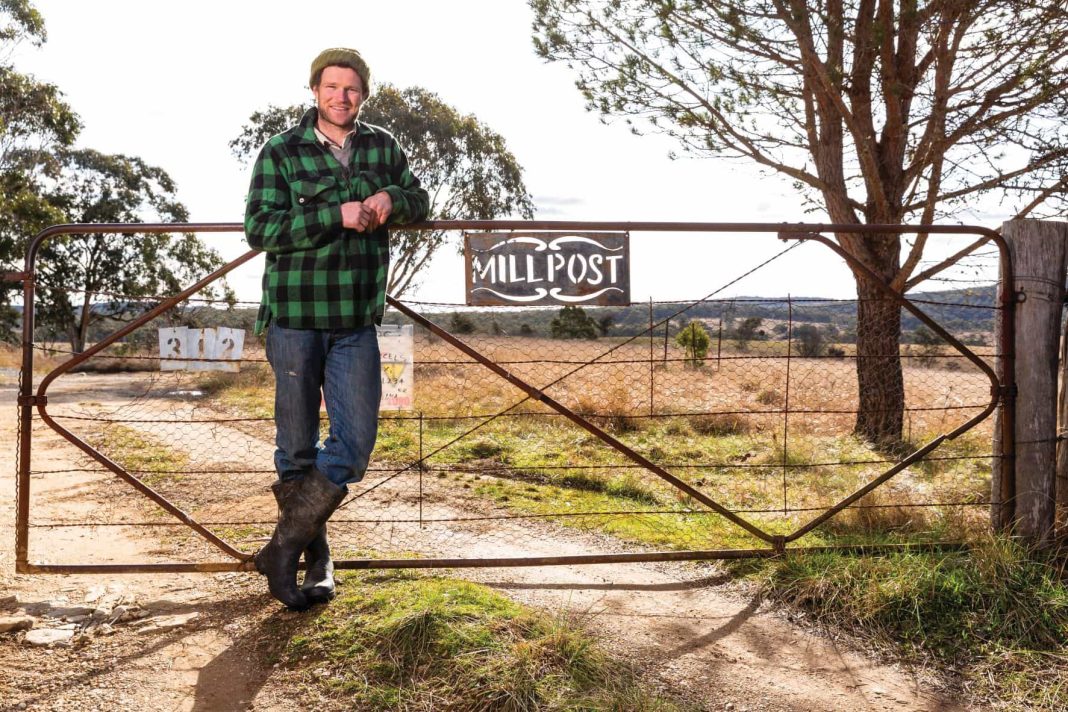The Watson family live on and care for the land at Millpost, a regenerative farm at Wamboin, near Bungendore NSW. David Watson and his wife Judith Turley have spent decades restoring the land, tending to their flock of Saxon Poll Merino sheep, and raising their three sons. Now, their boys have grown into men and the regenerative practices they have been implementing for years are becoming more popular.
Early adapters of permaculture, David and Judith met at a course where they learnt about methods and systems to mimic natural ecosystems in agricultural and horticultural practices. The permaculture course where the two met may have been the first of its kind, according to Harry, one of the couple’s sons.
Three generations of the Watson family live on the property. All three of David and Judith’s sons are there; Harry and Roy work on the farm while Murray works in bicycle repairs. Harry and Roy are both raising their young children at the property. Harry says he and Roy aren’t full-time graziers; he also has seasonal work undertaking ecological monitoring on other farms.
Millpost farm is featured in the Earth Canvas exhibition now showing at the National Museum of Australia. Canberra artist Alexander Boynes spent time at Millpost soaking up the atmosphere before creating his piece for the exhibition.
CW was lucky enough to be taken on a tour and introduced to some of the animals and regenerative techniques at the property.

Harry comes racing down a bumpy dirt road in an old four-wheel drive closely chased by Ruby and Laska, two of the farm’s dogs. He laughs as he says the drive isn’t usually this rough but three winters of heavy rainfall have taken their toll on the hard-to-maintain roads.
The farm has been in the family for nearly 100 years, from when it was the outstation of a larger farm closer to Queanbeyan. David was the first person to live on the farm, moving there in 1979; a few years later, Judith made the move and they got to work.
“Mum and Dad have been doing permaculture for 40 years and that includes having a permaculture whole farm plan. Most of permaculture is kind of about growing vegetables and fruit trees and stuff, but principles can be applied at a whole farm scale, broadacre. We are one of a few broadacre permaculture farms,” Harry says.
Standing near the driveway, you’re surrounded by bush and pastures, just part of the 1,200 hectares that Millpost spans. Harry says of the nearly 3,000 acres, a lot of it is remnant native wood and grassland with native vegetation. Between a quarter to a third of the property is improved, introduced pastures that they don’t crop and allow the sheep to graze.
“It’s all pretty tough country, that’s why we have sheep. We have about 1,500 sheep plus the lambs that are coming through now.”
He says there are numerous aspects of regenerative farming to consider, first of which is the ecological systems that support the farm.
“Improving the soil ecosystems and improving the grassland/pasture ecosystem building biodiversity and productivity in those. Improving not only the environmental state of our pastures but also the production so we can continue to produce good wool and sheep,” he says.
Next, Harry says, there is also the regeneration of the relationship with the land, one that is cooperative and doesn’t exploit it; this relationship needs to be restored at both the environmental and social levels. The family has been getting to know the traditional owners of Millpost and have given back a designated axe quarry to the local Indigenous people.
“It’s on the land title, it is designated as an Aboriginal place, which means it’s protected in perpetuity, it can’t be developed, has to be looked after and they have access to it. Even if the farm sold, it would remain protected.”
Finally, there is the financial side, farming is an industry and at the end of the day, they understand that to implement regenerative strategies, you still need to be able to be profitable. Harry says you can achieve better returns by working with the land and taking the time to get to know its needs.
“Hopefully, as you improve your ecology, you can improve your bottom line as well.”



As we approach some sheep, Harry explains one of their pasture management strategies is designed to prevent overgrazing. Around 70 permanent paddocks are subdivided with electric fencing which allows sheep only to roam certain areas; they then wait at least three months and up to 12 before allowing sheep back into a paddock. This form of natural regeneration allows the plants to fully rebuild their energy reserves before being grazed again.
“Traditionally, on this sort of country the sheep would have been going everywhere all year round and eating all the best plants freely. That fairly quickly leads to degradation because the most palatable plants disappear.”
David and Judith have planted tens of thousands of trees on the property, and Harry says he has planted quite a few himself. Around the homestead, an area that has already been dramatically changed from its natural vegetation, non-native deciduous trees have been planted. These trees lose their leaves during autumn to allow more light through in the winter; in the summer the leafy branches provide an extra level of shade. This is good for the microclimate and provides added protection for the property in weather events.
“They are also fire retardants; all these poplars and oaks and willows are all providing a bit of a fire barrier for embers blowing in because they won’t burn in a way the eucalypts will,” Harry says.
The trees have been planted in a thoughtful and purposeful way to improve wildlife habitat and connectivity. Many trees provide windbreaks that lead to patches of vegetation, allowing birds and smalls animals to move around the property safely from predators.
“They also provide shelter for the livestock so when it’s cold and windy they can get next to the windbreak and out of the weather and it provides shade, obviously, when it’s hot,” he says.



The regenerative principles also apply to the livestock; their sheep have thinner skin than most Merinos which reduces the risk of flystrike in their skin folds. It also means that they can be shorn more often; the Watsons are working up to this, conscious of the impact shearing can have during lambing season.
“You don’t want to disrupt the maternal bond between mother and lamb. Merinos are notoriously flighty mothers. They will abandon a lamb if they are stressed. So, you don’t want to disrupt that, especially if the lamb is really young,” Harry explains.
Although most of the farm’s wool goes to auction, the Watsons have started selling their own yarn, sending wool to New Zealand to be spun, dyed, and scoured before selling a range of superfine wool to crafters. Some of the Millpost Merino yarn is stocked at Woolshed @ Manuka.
“During the drought we didn’t have that many sheep, so we didn’t have as much income; we were only producing half as much wool as we were 10 years ago. It is about trying to make the wool go a bit further,” he says.



On Millpost, the Watson family are almost entirely self-sufficient. Along with the sheep, they also have dairy cows and chickens, and plant their own fruit and vegetables.
The mineral composition of the soil means that even though they grow many kinds fruit and veg, only garlic and tomatoes are viable for commercial use. These go to the Cork Street Café in Gundaroo, which is owned and run by Harry’s partner Cassie. Retired café equipment, such as some broken fridges, were quickly put to use as greenhouses for seedlings.
“Cassie was spending $300 a week on tomatoes for the café last summer, so we thought we would grow some more,” he smiles.
Harry says when he was growing up on Millpost, it felt a bit isolating as they didn’t have many friends nearby. Having moved away and worked and lived in other areas, including a stint in Canada, he is happy to back to be on the farm and raising his own family there.
“You can’t really see any other people from here, they can’t really see you. We can do what we like here.”



In connection to Earth Canvas at the National Museum of Australia, guests are invited to a Farm and Art Open Day, Saturday 8 October. The day starts at the museum for artist talk around the exhibition before jumping onto a bus (or driving) and heading to Millpost to see how the Watson Family works with the elements. For full details and registration; trybooking.com
Find out more about the Watsons and their Millpost farm at millpostmerino.com
Get local, national and world news, plus sport, entertainment, lifestyle, competitions and more delivered straight to your inbox with the Canberra Daily Daily Newsletter. Sign up here.



